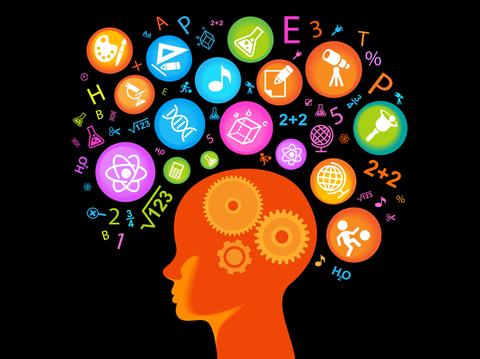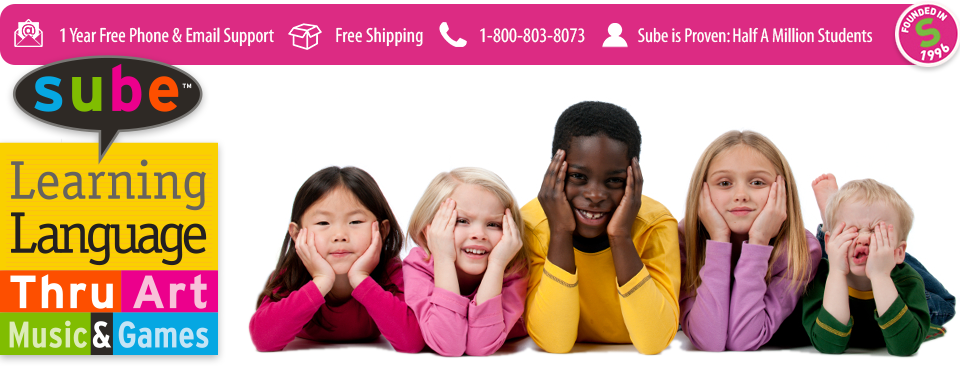
The world is shrinking. Or “flattening,” as Thomas Friedman put it.
The explosion of digital communication and emergence of a worldwide job market has placed a premium on what experts in the educational world refer to as “21st Century Skills.”
The need to develop strategic communication and interpersonal skills in our students in preparation for an increasingly technological and multicultural landscape is paramount.
Nowhere is this “21st Century” need more apparent than in the world of language, or should I say, in the area of “world languages.”
Trouble is, like any good buzzword, whetting the appetite is a lot easier than meeting the need.
So...
How do you practically teach “21st century skills” in the language classroom?
A few weeks ago, I launched my first eBook at ACTFL’s Annual Convention and World Languages Expo:
 ESL Games for 21st Century Brains:
ESL Games for 21st Century Brains:
40 ESL Classroom Games to Teach English thru
STEM + Art
It’s the first in a new series bringing together the worlds of (1) 21st century thinking (2) STEM (Science, Technology, Engineering and Mathematics), and (3) the arts...
...all as a tool for teaching English as a second language.
I designed it for ESL teachers (and soon SSL teachers as well) who believe that learning and creativity go hand in hand; teachers looking to spice up their curriculum, break the mold, and meet the needs of 21st century students.
A lot of research and energy went into the book, especially on the neurological front, and I decided to share some of the methodological insights my team and I gleaned from the process.
First, we started with the basics: international language standards.
We modeled our approach using clear goals from both ACTFL (American Council on the Teaching of Foreign Languages) and TESOL (Teachers of English to Speakers of Other Languages).
You can check out our Curriculum Kits’ full alignment guides here.
Next, we turned to the leading voice at the intersection of 21st century education and second-language learning: The Partnership for 21st Century Skills (P21).
Actually, we did more than just “turn” to P21.
What we did was build each and every activity around P21’s core concepts as presented in two cornerstone documents:
Today’s post is all about implementing the “Skills Map.” But check back with the blog or signup for our mailing list to read about the “Framework” next week.
5 Practical Teaching Tips
P21 has identified 5 Cs—communication, cultures, connections, comparisons, and communities—as guideposts to 21st century learning.
Here are some hands-on and engaging ways to put each one to work immediately.
1. Communication:
Most world language curriculum does a great job addressing what P21 calls the “interpretational” (understanding) and “presentational” (speaking and writing) modes of communication. Engaging students where language lives, at the interpersonal level, is the real challenge. Even more challenging is striking the right balance between all three.
By building your activities around collaborative play, target-language discussions, and personal introspection, one-on-one and small-group interactions become immediate and powerful outcomes.
Teaching Tip:
Regardless of the curriculum you use, it’s vital to both model and include one-on-one conversation activities with your class.
First, this means taking the time to create a nurturing environment for conversation to take place. For example, simply sitting on the floor in a circle can create a relaxed social environment for your entire class. You can also try pairing students in quite spaces around the room to reach more introspective students. Get creative and vary how you arrange your class physically.
Second, use timers (normally 30-60 seconds) for targeted conversation games. These short periods not only offer structure, they stimulate spontaneity and creative thinking which is exactly what your students need to start conversing in a new language.
Take a look at our Timer Sentence Game for a complete and completely hands-on example.
2. Cultures
Language and culture are “inextricably intertwined.” To teach one demands a wide-eyed understanding of the other. This means not only mining your class’ target language for illustrations and tools but exploring each student’s personal background as well. Linking language and culture in fun and student-centered ways makes the experience memorable and much easier to apply to real life.
Teaching Tip:
Try playing Holiday Clay with your class to bring together multiculturalism and some tactile fun.
Students choose a holiday or cultural tradition from their personal or ethnic background and create a claymation scene (or sculpture) to represent it. Everything you need is included in the post: a material list, step-by-step instructions, proficiency level variations, and even Tech Tools to expand the game into the digital world.
3. Connections:
Second language learning is ripe for cross-disciplinary study. All 40 ESL games from the eBook I mentioned earlier include content from a variety of other areas, most notably from the world of STEM (Science, Technology, Engineering, Mathematics).
Teaching Tip:
Weather Chart is an excellent activity that includes math, science, and media literacy. In it, students create an infographic (bar graph) from statistical data of a weekly or 10-day weather forecast. Again, everything you need is right there in the post itself.
4. Comparisons:
Nothing helps students understand their own culture like exploring a new one. By connecting the two in personal and practical ways, new worlds of self-understanding are opened. Through these avenues, language becomes a powerful, “affective” tool in your student’s personal development. The arts, in particular, encourage self-understanding and multicultural interaction.
Teaching Tip:
In addition to exploring holiday traditions from around the world, ask your students to imagine their own new and unique holiday tradition.
Have them illustrate their newly created tradition and write about it. This process encourages students to look for similarities and differences in cultural traditions, while stimulating creativity and critical thinking.
5. Communities:
We’ll say it again: language lives in the real world. And nothing helps students connect the classroom to real life like… well, real life. Whether that means bringing your students to the world or the world to your students, Sube’s Curriculum Kits as well as the eBook all include great community engagement exercises to help your lessons come to life.
Fun and effective online platforms such as Pinterest, Evernote, YouTube, and Twitter offer opportunities for real world interactions both in and outside the classroom.
Teaching Tip:
It’s never too early (or too late) to start a class blog. A blog is an outstanding way for your students to not only communicate with each other but to actually reach out to the local, national, and even international communities around them. This article has some excellent advice on picking the right platform for your needs.
Don’t Miss Out...
Every week we offer teaching tips, classroom management strategies, and free games here on the blog.
To make sure you don’t miss out, and to get a free 1-Hour Sample Lesson from either of our ESL or SSL Curriculum Kits. Click here.
